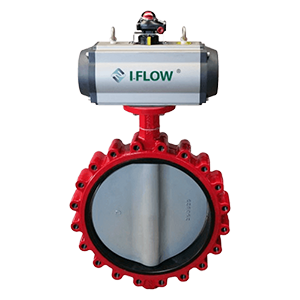In the world of industrial automation and process control, pneumatic valves are essential components that determine the efficiency, safety, and performance of your operations. Whether you’re running a manufacturing line, operating a packaging system, or managing a fluid power circuit, choosing the right pneumatic valve is not just a technical decision—it’s a strategic one.So how do you ensure you’re investing in the right pneumatic valves for your business? Let’s explore the key factors, options, and benefits, so you can make an informed choice.

Understanding Pneumatic Valves and Their Role
Pneumatic valves are devices that regulate the flow and direction of compressed air within a pneumatic system. These valves open or close passageways to control airflow and, in turn, the movement of actuators, cylinders, or other mechanical components. They are vital in industries such as automotive manufacturing, food and beverage processing, pharmaceuticals, packaging, and material handling.
Pneumatic valves can be manually operated, solenoid-controlled, or pilot-actuated, offering flexibility across automation levels. Their fast response time, reliability, and ease of integration make them a preferred choice in many modern systems.
Common Types of Pneumatic Valves
Before diving into selection criteria, let’s examine the major types of pneumatic valves and their typical applications:
-
Directional Control Valves: These valves control the path of airflow. The most common configurations include 2-way, 3-way, and 5-way valves.
-
Flow Control Valves: Used to regulate airflow speed to cylinders or actuators, helping manage motion precision and safety.
-
Pressure Relief Valves: Protect pneumatic systems from over-pressurization by releasing excess air.
-
Shuttle Valves and Check Valves: Used in logic circuits and for preventing backflow in the system.
-
Solenoid Valves: Electrically actuated valves ideal for fast, remote control in automated systems.
Each type serves a specific function, and the correct choice depends on the demands of your operation.
Key Factors in Choosing the Right Pneumatic Valve
1. System Requirements and Valve Function
Start with a clear understanding of your system. Are you controlling direction, pressure, or flow? Do you need on/off control or modulation? Define the function the valve must perform.
2. Port Configuration
Valve porting determines how many inlets/outlets the valve has. For example:
- 2/2 valves control one inlet and one outlet.
- 3/2 valves are often used for single-acting cylinders.
- 5/2 or 5/3 valves are ideal for double-acting cylinders.
The right port configuration ensures efficient control and avoids costly system redesigns.
3. Actuation Method
Depending on your control system, you can choose from:
- Manual Valves (lever, button): Simple and cost-effective for basic systems.
- Mechanical Valves: Triggered by cams or levers, used in repetitive mechanical systems.
- Solenoid Valves: Ideal for automated processes; require an electrical signal.
- Pilot-Operated Valves: Use compressed air as the actuation signal—suitable for high-flow applications.
4. Operating Pressure and Flow Capacity
Check that the valve can withstand your system’s maximum and minimum pressure requirements. Also consider flow rate, typically measured in Cv or SCFM, to ensure the valve won't become a bottleneck in your process.
5. Environmental Conditions
Is your facility exposed to moisture, dust, high temperatures, or chemicals? Choose materials and IP-rated valves that can withstand these factors, ensuring durability and safety.
6. Valve Material
- Brass and Aluminum: Lightweight, corrosion-resistant, suitable for general industrial use.
- Stainless Steel: Excellent for hygienic or corrosive environments, such as food or chemical plants.
- Plastic: Lightweight and cost-effective, typically used in less demanding applications.
Common Mistakes to Avoid
Selecting a pneumatic valve isn’t just about technical specs—it’s also about practical application. Here are some pitfalls to avoid:
- Overlooking Compatibility: Always match your valve’s specifications with the rest of your pneumatic system.
- Choosing Based on Price Alone: Low-cost valves may lack durability or performance, leading to downtime and costly repairs.
- Ignoring Maintenance Needs: Some valves require regular service. Failing to consider this can lead to early failure.
- Neglecting Future Expansion: If you plan to scale operations, select modular valves that support easy upgrades.

.png)
 en |
en |















